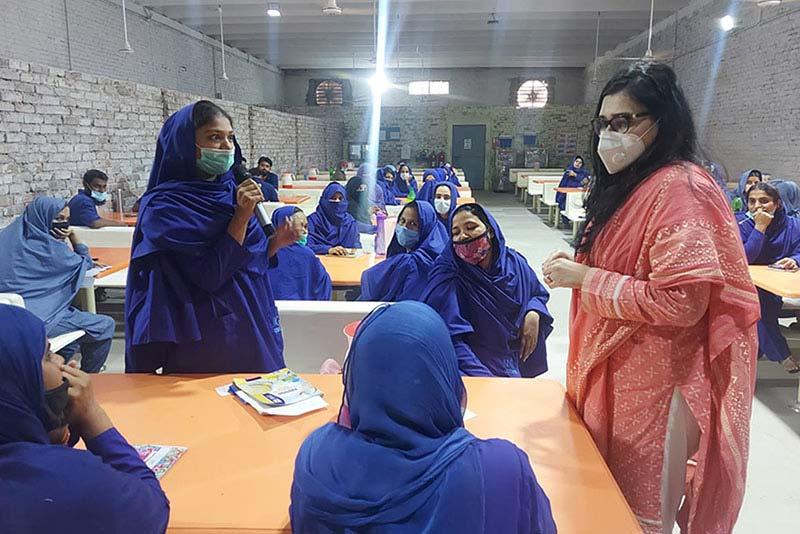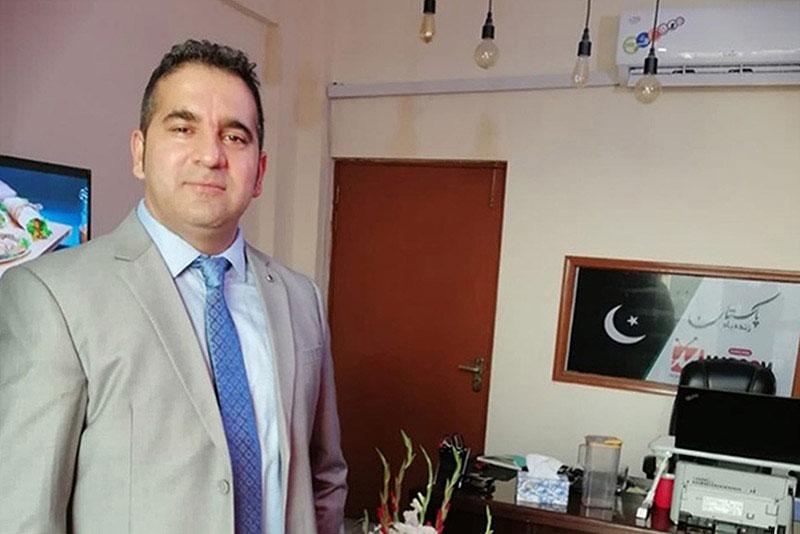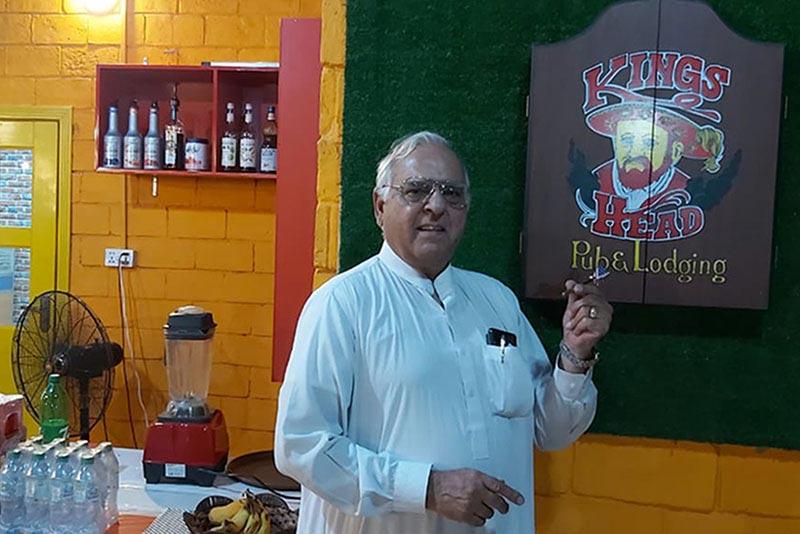By Zia Ur Rehman
In Pakistan, where I live, the fourth wave of the pandemic started in July. Cases are on the rise once again: Large cities like Karachi are reporting high numbers of COVID-19, and authorities are expressing concern for what’s to come. As I have been reflecting on the implications of the pandemic for our nation’s economic and social recovery, I am concerned, too. I lost my elder brother to COVID-19, so this is not just an intellectual exercise—it’s personal, and often painful.
But in my professional role at IFC, I’ve been paying special attention to how business owners are navigating a new way forward, despite the ups and downs of the disease. I spoke to several entrepreneurs, owners of firms, and people who run organizations to find out how they are managing their way through these uncertain times.
Representation matters more than ever
For Gulalai Khan, a Pakistani women’s rights activist and mother of two, COVID-19 highlighted some stark realities about gender dynamics.
When the pandemic hit, Khan, who runs the nation’s Professional Women’s Forum, shifted to home-based work while also helping her children learn online. At the same time, she was also responsible for facilitating online learning for women who were cut off from the internet and isolated because of the stay-at-home order.
During the pandemic—which required participants to be online instead of showing up in person—she began to see the extent of the digital divide in Pakistan, and how the lack of access to online services constrained women’s voices and limited their representation.

Apparel workers discuss with Gulalai Khan their experience at training sessions. Photo by: Afifa Zafar
Given the social context in Pakistan, that’s not a big surprise. The percentage of women in the workforce is the lowest in South Asia—only 26 percent women are employed, compared with 82 percent of men. Women in Pakistan are 38 percent less likely than men to own a mobile phone and 49 percent less likely to use mobile internet (a cellular/data network), according to the Mobile Gender Gap Report.
The pandemic made those figures real, according to Khan. “I realized I had an even more important mission to accomplish and could make a massive impact” by shifting approaches and offering more opportunities for women to participate offline once restrictions on movements and events were relaxed, she said.
One result of that epiphany took place on International Women’s Day last March. Khan signed a memorandum of understanding with a large textile group in Pakistan to provide in-person career and mentorship training to 5,000 professional women from South Punjab working in the textiles industry.
Being able to organize a program that met the needs of so many women “has been the most fulfilling [experience] personally and professionally in my two decades of work,” Khan said. One encounter that Khan found especially moving involved a participant who is a widow with six children. At the start of the program, she would hide behind her dupatta (a traditional shawl) to avoid talking. But by the end of the in-person coaching sessions at the Textile Training Facility in Multan city, Khan said the woman had developed the courage to give presentations.
“I feel a sense of professional and personal satisfaction when I see that I can give these women what they need most: the confidence to communicate, work better in teams and diverse workplaces, and most of all, the ability to dream of a better life for themselves and their families,” Khan said.
Putting employees first
My friend Sardar Zaheer Zaufran, CEO of MARCOM advertising agency, has experienced different kinds of challenges. When pandemic-related difficulties caused his clients to cut their marketing budgets, Zaufran’s business dropped by almost 60 percent. At the same time, the switch to home-based work required the business to purchase laptops, internet, phone service, and office equipment for its corps of virtual workers. But they soon discovered that home-based work was no panacea; sluggish internet speeds made it difficult for employees to maintain momentum.

Sardar Zaheer Zaufran, CEO of MARCOM Private Limited. Photo by: Khurram Shahzad
Despite the difficulties, Zaufran was committed to keeping employees on the payroll. “Instead of laying off staff, I decided to assign them to a creative project,” he said.
The project, a upbeat daily news bulletin distributed via social media, received an overwhelmingly positive response. It made it possible for the business to retain its staff during a difficult time, and Zaufran now considers his firm to be in the recovery phase.
Tahir Ali Khan, a friend in Islamabad who was about to launch a new restaurant, the Classic Scene café, just before the pandemic hit, also made his workers his first priority.

Tahir Ali Khan, owner of the Classic Scene Café in Islamabad. Photo by: Zia Ur Rehman/IFC
Just before opening day, authorities in Pakistan imposed limits on movement and dining to curb the spread of the pandemic. But Khan, who had retired from a multilateral development bank and consulted in the private sector before going into the restaurant business, had already committed to the lease, so he had to pay rent. Although he tried to stay open and fulfill orders through a local delivery service, very few people were aware of his new business, so he wasn’t able to meet his operational costs.
However, he didn’t want to lay off staff “as they were from very poor backgrounds and needed my support,” he said. He used personal income from other sources to keep his employees on the payroll until the Classic Scene cafe finally opened in October 2020.
Now, “Things are improving, though at a slow pace,” Khan said. “
Power interruptions
COVID-19 also impacted the business of my friend Omar Malik, who runs Shams Power, a solar energy investment company that provides solar power solutions to Pakistan’s industrial and commercial sectors. Since its inception, Shams Power has created more than 20 megawatts of renewable energy, enough to power nearly 18,000 homes.
Solar power is important in a country like Pakistan, which faced severe power outages and load shedding until recently, when the government improved the power supply. The power sector faced a demand-supply gap in May and June of 2021 due to generation issues. This means that many citizens across the country have had no electricity or power for three to six hours a day. In some parts of the country, people have had no electricity or power for 16 hours a day.
Malik believes that the pandemic adversely impacted solar power installations. For example, in his experience, Shams Power operations require complex documentation and on-site physical inspections. During COVID-19, some sites required employees’ physical presence for authorization, review, repair, and maintenance, which was not possible due to pandemic restrictions. This resulted in delays and loss of efficiencies. —as well as the loss of electricity.
“We gathered required data remotely using geo-technologies such as Google maps, but it was not sufficient,” said Malik. “Solar installations required regular maintenance and cleaning but access to client’s premises was restricted in many places, thus power yield declined.”
A bright spot: housing
While many friends talk about the adverse impacts of COVID-19, the housing industry has been less affected than other sectors—mainly because the government did not impose restrictions. That’s significant because the country’s construction industry accounts for about 2.5 percent of gross domestic product, employing more than 7 percent (or nearly 5 million) of the Pakistani labor force.
For my friend Kashif Khan, an owner of a private housing construction business in Islamabad, the early days of the pandemic meant uncertainty was high. His work initially ground to a halt as investments in the real estate sector declined.
But the decline in investment was temporary, and the situation improved when people realized the housing sector was going to stay open, Khan said. Even though the pandemic spurred inflation and devaluation due to a gap in supply and demand—which hampered some projects because of subsequent cost increases—there was relief ahead. When the government announced a package for the construction industry including a tax amnesty scheme, and interest rates were brought down, that helped businesses and investors, Khan said.
As I reflect on the pandemic’s impact on Pakistan’s economy, I try to focus on the positive—the government’s highly organized and well-managed vaccination drive.
Some important lessons will stay with me as our society continues to navigate this uncertain time. Pakistan will need to improve digital and financial inclusion and increase women's participation in the economy to boost its economic recovery. COVID-19 highlighted that 70 percent of people in Pakistan’s labor force are associated with informal sectors—leaving them more vulnerable and affected by lockdowns and closures, with fewer savings, and no formal social protection networks to draw on.
I am hopeful that our resilience as a nation will continue—and with it, better opportunities for all of our citizens.
Zia Ur Rehman is an IFC communications consultant in Islamabad, Pakistan.
Published in August 2021
